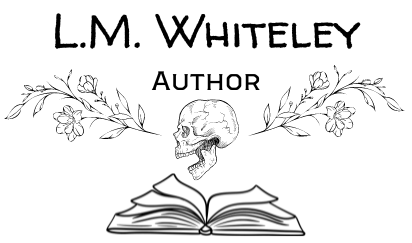It’s been another job. I’m not talking about writing (but that is, sometimes, too) but publishing. I’ve spent HOURS over the past few days navigating this process.
I believe the last post left off at the step where I was working on my cover. Well, I’ve done that. And redid it. And redid it. And… you get the point. Everyone got pretty tired of “how does this look? What about this font? What if I move it up a quarter of an inch?”
So let me condense my observations about this part, if you’re going the DIY route.
- Fonts are fucking hard. Frankly I’ve spent the most single time on picking a damn font. One of the ways that professional covers look professional is that their fonts are textured, or beveled, or perfect and genre-specific. If you’re using Canva, there are plenty built-in options, but I’ve hemmed my last damn haw about this. Will I change it again? Maybe. But that’s what alternate covers are for?
- It needs to look good small. And I mean very small. Most people are going to see the book as a thumbnail size, so shrink it down while you’re making it and make sure it looks good. Make sure the title is readable.
- If you’re making a paperback cover, do formatting first. Why? Because once you have the number of pages, you can calculate how thick the spine needs to be. Once you know how long the whole wraparound cover will be (left side is the back flap, spine in the middle, front cover on the right), you can make one cohesive image and just crop what you need from the front to become the ebook cover. Trust me. I wish I’d done this.
- Dark romance has a wide variety of styles for covers, but there are two that are fairly common. One is hot bad boy and one is imagery that includes (usually) skulls, flowers, butterflies, spiderwebs and/or snakes and shakes of red. I was a bit confused that people wouldn’t know what genre mine was, so I just added “A Stalker Romance” to the cover.
- When you think you have a good cover, show it to some strangers on the internet. I’ve found a few facebook groups focused on specifically critiquing covers/blurbs to be particularly helpful. Writers understand. Writers know about genre expectations. Writers who don’t know you won’t spare your feelings.
I mentioned I should have formatted first. For this, I used Reedsy for because Word made me want to tear my hair out and I was worried about having a table of contents. Reedsy was pretty easy, and the learning curve was very low. It gave it to me in word, pdf and ebook formats and it made a very nice product. It looks very clean. The only thing I’ll say is that choice is limited (this is not a wholly bad thing). I wish I could change what the inside title page looks like in terms of the Font/order of info, etc. Most readers don’t read this part, but I still want it how I want it… ya know? It also isn’t super flexible with subtitles or in the TOC (table of contents) changes. For my dual POV book, I would prefer a TOC with the narrator’s name next to the chapter. I’m stuck with 1, 2, 3, etc.
Publishing to KDP was, frankly, a breeze. It walks you through it. I will admit to a fair amount of information overload when first confronted with their extensive resource library. You do not need to read all that. At every choice, there is a linked resource, and the option to save as draft and come back. It takes a lot of pressure off. So, now I have an ebook ready to go to create the listing with a release date of June 2nd! That will allow me to start things like sending out ARC copies so there’s a link to send people for where to leave their review.
As for the paperback, I’ve saved a draft but I’m waiting for my printed preview to come before I launch that bad boy. Too many variables. And honestly, I think having a physical copy will be a) FUN and b) the best possible tool for a final edit. Nothing screams MISTAKE quite like finding it in a printed book…
I have also set up an account through Bookfunnel. This seems like an incredible resource for a few things: building readership by cross promotions with other authors, getting people signed up for my (pending) newsletters, and sending out watermarked ARC copies. But if you’ve every thought to yourself “I need ARC reviews in order to sell books, but how the hell do I build an ARC team?” Well, bookfunnel might just be the answer to that. I haven’t really dived in all the way yet because my book isn’t even live on Amazon yet (72 hr delay), but I will be utilizing it heavily in the next few weeks I think.
Next on the agenda… Creating a newsletter. And checking out bookfunnel’s free alternative, storygraph.
